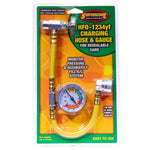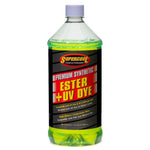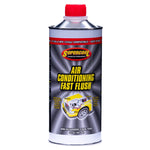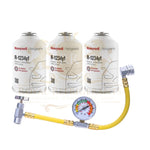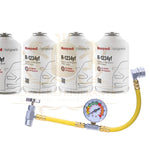You have no items in your shopping cart.
Everything You Need to Know About Freon Automotive Air Conditioning for HVAC and Automotive Applications
For decades, Freon was the go-to name for automotive and home air conditioning refrigerants. If you’ve ever turned on your car’s A/C and enjoyed the cool air, Freon (or one of its modern replacements) is what made it happen.
However, over time, environmental concerns and technological advancements have transformed how refrigerants are used in both automotive and HVAC systems.
In this article, we’ll explore everything you need to know about Freon automotive air conditioning — what it is, how it works, its types, and the eco-friendly alternatives shaping the future of cooling.
What Is Freon?
Freon is actually a brand name owned by DuPont (now Chemours), used to describe a family of chemical refrigerants known as chlorofluorocarbons (CFCs) and hydrochlorofluorocarbons (HCFCs).
These compounds were once widely used in:
-
Automotive air conditioning (A/C)
-
Home HVAC systems
-
Refrigerators and freezers
The most famous Freon types include R-12 and R-22, both now phased out due to their ozone-depleting properties.
How Freon Works in Automotive Air Conditioning
The science behind Freon (and modern refrigerants) is based on heat transfer. The refrigerant cycles through a closed loop, changing between gas and liquid states to absorb and release heat.
Here’s the simplified process:
-
Compression: The compressor pressurizes Freon gas, raising its temperature.
-
Condensation: The hot gas flows through the condenser, where it cools into a liquid.
-
Expansion: The refrigerant passes through the expansion valve, rapidly dropping in pressure and temperature.
-
Evaporation: The cold refrigerant absorbs heat from the car’s cabin air, turning back into gas and repeating the cycle.
This continuous loop keeps your vehicle’s interior pleasantly cool — even on the hottest days.

Freon in Automotive Applications: A Historical Perspective
In the early days of automotive air conditioning (1950s–1990s), Freon-12 (R-12) was the industry standard. It provided excellent cooling but had a serious drawback — it contained chlorine, which damaged the ozone layer.
As a result, international environmental agreements such as the Montreal Protocol led to its global phase-out in the mid-1990s.
After that came R-134a, a more environmentally friendly alternative, followed by newer refrigerants like R-1234yf, which have very low Global Warming Potential (GWP).
Types of Automotive and HVAC Refrigerants
| Refrigerant Type | Common Use | Environmental Impact | Status |
|---|---|---|---|
| R-12 (Freon-12) | Cars before 1995 | High ODP (Ozone Depletion Potential) | Phased out |
| R-134a | Cars 1995–2016 | Moderate GWP | Still in use, being phased down |
| R-1234yf | Cars 2017–present | Very Low GWP | Current standard in new vehicles |
| R-22 (Freon-22) | Older HVAC systems | High ODP | Phased out |
| R-410A / R-32 | Modern HVAC systems | Low ODP, lower GWP | Widely used |
💡 Note: Although people still refer to all refrigerants as “Freon,” today’s systems often use non-Freon alternatives that are safer for the environment.
Freon in HVAC Systems
Freon wasn’t just used in cars — it was also the main refrigerant in residential and commercial air conditioners. Systems using R-22 Freon have been phased out since 2020 in most countries, replaced by more eco-friendly options such as R-410A and R-32.
If your home HVAC still uses R-22, it may need retrofitting or full replacement to comply with environmental standards.
Signs Your Automotive A/C May Need a Recharge or Inspection
Your car’s A/C system depends on the correct refrigerant pressure to function properly. Watch out for:
-
Warm or weak airflow
-
Hissing or bubbling sounds
-
A/C compressor not engaging
-
Oily residue on hoses or fittings
-
Foggy windows or musty smells
If you notice these symptoms, have your system inspected by a certified technician. Attempting to recharge Freon yourself is not recommended, as handling refrigerants requires proper equipment and certification.
Environmental Regulations and Freon Alternatives
Due to its harmful impact on the ozone layer, Freon-based refrigerants (R-12, R-22) have been banned or heavily restricted under environmental laws.
Modern alternatives like R-1234yf and R-744 (CO₂) are:
-
Non-ozone depleting
-
Highly energy-efficient
-
Safe for long-term use
These refrigerants are now standard in most new cars and HVAC systems, offering the same cooling performance with minimal environmental impact.
Maintenance and Safety Tips
To keep your vehicle’s A/C in top shape:
-
Have your system checked annually, especially before summer.
-
Never mix refrigerants — use only the type specified by your car manufacturer.
-
Fix leaks immediately, as escaping refrigerant harms both the environment and system efficiency.
-
Rely on certified professionals for refills and repairs.
-
Replace cabin air filters regularly to maintain optimal airflow and cooling.
The Future of Automotive and HVAC Cooling
The industry is moving rapidly toward eco-friendly, high-efficiency refrigerants. Future systems will use refrigerants with ultra-low GWP, better thermal performance, and compatibility with electric and hybrid vehicles.
Innovations like R-744 (CO₂) and hydrocarbon-based refrigerants are paving the way for a sustainable cooling revolution — delivering comfort without compromising the environment.
Conclusion
Freon played a key role in the history of automotive and HVAC cooling systems, but environmental awareness has driven a shift toward safer, greener refrigerants.
Understanding how refrigerants work — and which type your vehicle or HVAC system uses — helps ensure efficient cooling, longer system life, and a cleaner planet.
As technology evolves, expect eco-friendly refrigerants to define the future of automotive air conditioning.
 English
English

